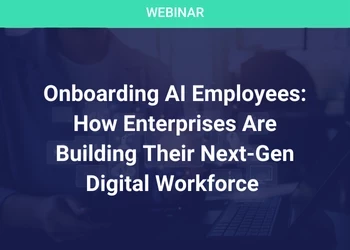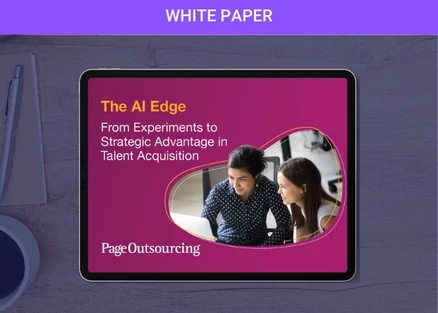The Symbolic Shift: Technology, Meaning, and Leadership in Shared Services
How narrative intelligence, adaptive strategy, and new technology shape the next evolution of GBS
Add bookmark
The Symbolic Shift: Technology, Meaning, and Leadership in Shared Services
From Systems to Stories:
Over the past three decades, the Shared Services and Outsourcing landscape in Europe has evolved from modest back-office cost centers into sophisticated enablers of enterprise transformation. What began as a drive to centralize transactional tasks has matured into a dynamic network of Global Business Services operations that fuel agility, scalability, and resilience across the enterprise.
Despite these impressive strides in scope and sophistication, a core challenge persists and in many ways, it has become even more pressing: how to communicate change in a way that is meaningful, engaging, and unifying. In other words, how can leaders craft and deliver a compelling story about transformation that creates alignment, ownership, and belief? Modern organizations have no shortage of tools. ERP systems, cloud platforms, AI-powered analytics, and automation suites have flooded the landscape. Yet even with this technological arsenal, transformation efforts still stumble when they lack the essential ingredient of human clarity of purpose.
Technological change without symbolic meaning leads to fatigue, it is not enough to install a new system or roll out an automation bot. People need to understand what is the meaning to their work, and to the future of the organization. This is the new frontier of leadership where leaders translate complexity into coherence, uncertainty into possibility, and systems into stories.
The Shift from Instruction to Interpretation:
Leadership within GBS is undergoing a fundamental metamorphosis. The old model was based on cascading goals, rigid controls, and operational oversight, and that’s no longer sufficient in a world defined by constant disruption and interconnected ecosystems. We are past the time where GBS leaders are just architects of the process. They must be the interpreters of meaning, no matter if they lead a multifunctional GBS center, coordinate hybrid operating models, or expand capabilities into new regions. Leaders are being called upon to guide teams not just through workflows, but through a journey of how things are being transformed.
This is where narrative intelligence becomes an essential leadership trait. Narrative intelligence is the ability to shape and communicate stories that make abstract or complex situations emotionally and cognitively accessible. It's the difference between saying “We’re implementing AI to optimize workflows” and saying “We’re entering a new chapter where our people work with intelligent tools to do their best, most creative work.” In other words, narrative isn’t fluff; it’s infrastructure, builds alignment, unlocks participation, and above all, strengthens the collective sense of purpose across global teams.
Beyond the Dashboard: Making Meaning at Scale:
Dashboards can display metrics, but they cannot generate meaning. As digital maturity deepens across shared services functions, the value proposition is no longer limited to operational efficiency or SLA compliance. Leaders now face deeper questions:
● How do we make GBS a destination for talent, not a stepping-stone?
● How do we articulate and deliver value beyond transactional excellence?
● How do we integrate AI into our daily ways of working in a human-centered way?
These are not purely strategic or technical questions; they are symbolic and keep asking us to reframe the purpose and perception within an organization. To succeed, leaders must evolve from managing service delivery to enabling experiences and shaping a meaning shared across borders, real and imaginary.
Trust today is built not only through delivery, but through transparency, empathy, and shared narratives. People need to understand how they fit into the evolving enterprise and why the work they do is important, and that’s because the human aspect required for significance is something you can not separate from the success of transformation initiatives.
This is especially true when leading change, people can use metaphors to describe a transformation, such as “we’re entering the next chapter,” or “we’re crossing a bridge”, that’s not a cheap marketing trick, but that time when storytelling taps into emotional and cognitive pathways that enhance memory, commitment, and understanding.
The Four Eras of Technological Shift in Shared Services:
When we look at the evolution of shared services since the 1980’s, through both technological and symbolic lens, there’s clearly a pattern of transformation occurring in four distinct eras:
1. Digitization
The first wave focused on centralization and control. ERP systems, enterprise platforms, and centralized service hubs were implemented to reduce cost and increase visibility. The story was one of standardization and efficiency.
2. Automation
Next came the rise of robotic process automation (RPA) and early analytics. Repetitive tasks were offloaded to bots, and rule-based decision-making was automated. The story here was one of optimization and speed.
3. Intelligence
As data became the new oil, GBS centers began leveraging predictive analytics, business intelligence platforms, and real-time insights. The story shifted to one of strategic enablement, becoming trusted advisors rather than transactional executors.
4. Humanization
We now stand in the fourth era. Here, the focus is not just on machines but on the integration of human intelligence and augmented digital capabilities. Design thinking, user experience, service design, and emotional intelligence come to the forefront. This era demands people at the front who can bridge technology with humanity. They ensure that every innovation enhances, not erodes, the human experience at work.
This fourth era is especially challenging because it is full of paradoxes. We’re deploying more advanced technologies than ever, yet our success depends increasingly on human connection, emotion, and culture. Leaders must now translate technical investments into value narratives that resonate across cultures, functions, and mindsets.
Agentic AI and the Role of GBS Leadership:
We are entering a world shaped by Agentic AI. That’s Artificial Intelligence that doesn’t just respond when you chat, but initiates. These systems analyze, recommend, and take proactive action based on context. They are capable of adjusting behavior, initiating workflows, and even personalizing user experiences at scale.
In this new landscape, AI will not replace leaders. It will amplify the impact of those who can infuse technology with meaning. The most effective GBS leaders are those who can:
● Contextualize technology: Framing AI not as a threat but as an enabler of human
potential.
● Build symbolic capital: Using narrative to define what the future looks like and
why it matters.
● Foster adaptive cultures: Creating spaces for experimentation, failure, and
continuous learning.
Forward-thinking GBS organizations are already shifting their outsourcing criteria. No longer is it just about labor arbitrage or headcount reduction. Now, decisions are influenced by AI readiness, experience management, regulatory flexibility, and ecosystem orchestration.
Where GBS Becomes the Coveted Place to Work:
To future-proof GBS, we must go beyond function and toward aspiration. That means creating and communicating a clear narrative about what GBS offers as a career path, not just a career pit stop. A GBS model that succeeds long-term is one that sees itself as a talent magnet, an innovation engine, and a visible partner to enterprise growth. This requires managers to continuously articulate roles, development journeys, and purpose across every level of their organizations.
What are the character types, builders, explorers, mentors, and guardians? What does it mean to “graduate” from one floor of the shared services skyscraper to the next? When employees see themselves in the story, they become more than participants but protagonists. In this context, storytelling is not internal marketing; it’s culture building and the thread connecting performance to purpose, metrics to meaning, and tasks to transformation.
The Future is a Story We Share:
As we reflect on this symbolic shift, from systems to stories, from instruction to interpretation, from efficiency to experience, it becomes clear that the next generation of success will not be defined solely by what we build, but by what we believe. Technology will continue to evolve, disruption will continue to accelerate, and amid this complexity, the organizations that thrive will be those that cultivate narrative coherence, adaptive capacity, and human-centered leadership.
It’s time to move beyond the mechanics of transformation and into its meaning. To lead not only with dashboards, but with dialogue. Not only with logic, but with language. Not only with code, but with culture. To gain more insights from our SSO Network please join us for our upcoming Intelligent Automation Virtual Summit.

































